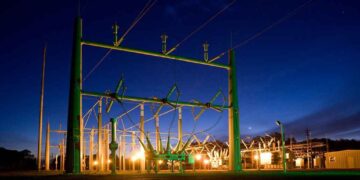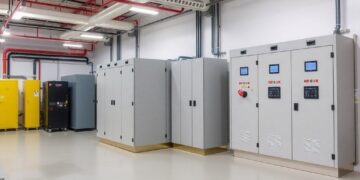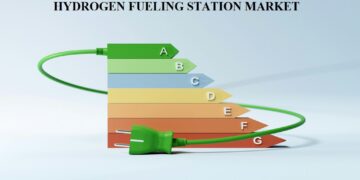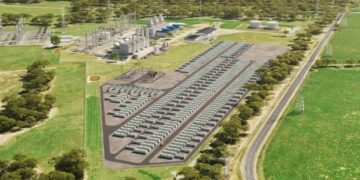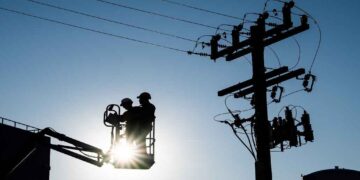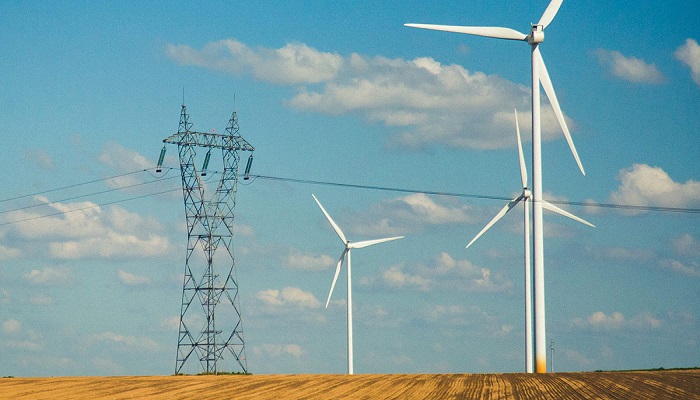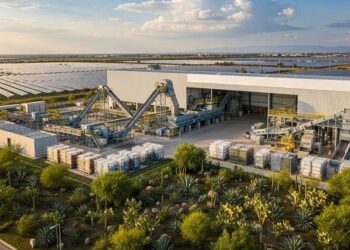The United Kingdom is preparing for its general election on July 4, a pivotal event coinciding with a critical period as the nation strives to meet its climate targets. Potential changes in the Cabinet could dramatically influence the UK’s energy sector’s trajectory, particularly regarding renewable energy policies. This election stands as a crucial juncture for shaping the future of the country’s energy policies.
A recent YouGov survey suggests that the Labour Party is likely to win a majority of 200 seats. Conversely, the Conservative Party is predicted to experience an unprecedented decline in representation. Projections indicate that the Tories might lose over half of the 365 seats they secured under Boris Johnson in 2019, potentially dropping to just above 100 MPs. If these predictions hold, the political landscape in Britain will undergo significant transformation.
In this scenario, the Liberal Democrats are expected to gain approximately 20 seats, increasing their total to 67, marking their strongest performance in a British general election to date. As of June 19, the Greens have maintained their lead in two electoral constituencies.
Manifestos of Leading Parties and Their Implications for Renewables
The manifestos of the leading parties reveal various strategies for achieving essential goals like emission reduction, renewable energy expansion, and enhanced energy security and efficiency.
Labour Party’s Renewable Energy Vision
The Labour Party aspires to transform Britain into a “clean energy superpower,” pledging £8 billion over five years to establish a new publicly owned entity, Great British Energy Company- GB Energy. This company, envisioned to be owned by the British populace, aims to return control of power generation to the people. GB Energy plans to collaborate with energy firms, local authorities, and cooperatives to launch numerous clean power initiatives, including onshore wind, solar, and hydropower projects.
Labour’s strategy includes allocating £3.3 billion to support local authorities and communities in developing small-scale renewable projects. This initiative promises to reduce energy bills, create jobs, and ensure security with affordable, zero-carbon electricity by 2030. The party encourages community-driven projects, with local leaders and devolved governments ensuring residents benefit directly from these initiatives.
Labour aims to increase onshore wind capacity, position the UK as a leader in related technologies, triple solar energy output, and quadruple offshore wind capacity by 2030. The manifesto also highlights investments in hydrogen and wave energy. Additionally, the party plans to support nuclear energy by extending the lifespan of existing plants and accelerating ongoing projects. Party leader Keir Starmer emphasizes the importance of nuclear power in the UK’s energy mix and commits to advancing delayed projects supported by the party.
Conservative Party’s Energy Policies
The Conservative Party proposes to enhance renewable energy support, with a pledge to triple the UK’s offshore wind capacity to provide low-cost, domestically produced energy. They aim to develop vibrant industrial clusters in the northeast of England, Scotland, and Wales. However, the manifesto lacks a specific target for offshore wind expansion.
The Conservatives plan to allocate £1.1 billion to the Green Industries Growth Accelerator- GIGA, a fund introduced in autumn 2023, to boost clean manufacturing in the UK, strengthen supply chains, and support the transition to clean energy. They also promise to build a new nuclear plant at Wylfa in North Wales, replace the decommissioned one, and collaborate with the industry to complete nuclear projects at Hinkley Point and Sizewell.
The party intends to reduce green levies on household bills by leveraging the reduced costs of renewable power sources, especially solar power and wind power. They guarantee that policy costs and levies on household energy bills will be lower in each year of the next Parliament than in 2023, making green energy more affordable for households.
However, the Conservative government’s commitment to renewables includes plans to build new gas power stations to maintain reliable energy sources during periods when renewable energy generation is insufficient. They also plan to rapidly expand nuclear energy and hasten the approval process for new nuclear reactors, aiming to approve two new fleets of small modular reactors (SMRs) within the first 100 days of the next Parliament.
Green Party’s Renewable Energy Proposals
The Green Party aims for wind power to supply around 70% of the UK’s electricity by 2030, with plans to deliver 80GW of offshore wind, 53GW of onshore wind, and 100GW of solar power by 2035. They also intend to invest in energy storage capacity and improve electricity distribution efficiency.
In contrast to other parties, the Greens advocate for phasing out nuclear energy, arguing that it is unsafe and more expensive than renewables. Their manifesto highlights that the progress of nuclear power plant construction is not meeting the urgency required to address climate change, and they note the challenges of disposing of radioactive waste generated by nuclear power stations.
Liberal Democrats’ Focus on Renewables
The Liberal Democrats plan to allocate resources to ensure that 90% of the UK’s electricity comes from renewables by 2030. They emphasize the need to significantly reduce the UK’s dependence on fossil fuels and invest in renewable energy. Their manifesto outlines specific measures to accelerate the deployment of renewables, including removing unnecessary restrictions on solar and wind energy imposed by previous administrations.
The party also plans to build grid infrastructure supported by a strategic Land and Sea Use Framework to accommodate increasing renewables. They aim to collaborate with European countries to develop a sustainable supply chain for renewable energy technology. Additionally, the Liberal Democrats propose establishing national colleges for key sectors, including renewable energy, to provide businesses with the high-level vocational skills they need.
Although their manifesto does not mention nuclear energy, this omission leaves room for speculation about whether they would oppose policies supporting nuclear power.
Effects of Elections on Renewable Energy
The renewable energy proposals of different political parties show distinct policy approaches. Labour focuses on managing resources while expanding the UK’s renewable sector and maintaining a commitment to nuclear power. The Conservatives support renewables but also continue to endorse oil and gas exploration and further nuclear power development.
Meanwhile, the Greens and Liberal Democrats, traditionally environmentally conscious, advocate for a swift and significant transition away from fossil fuels. The outcomes of the general election will play a significant role in determining the future direction of the UK’s energy policies and its progress toward meeting climate targets.
Keywords: Renewable Energy Policies, Invest In Renewable Energy, Nuclear Power Stations, Renewable Energy Policies, Radioactive Waste.
The United Kingdom is preparing for its general election on July 4, a pivotal event coinciding with a critical period as the nation strives to meet its climate targets. Potential changes in the Cabinet could dramatically influence the UK’s energy sector’s trajectory, particularly regarding renewable energy policies. This election stands as a crucial juncture for shaping the future of the country’s energy policies.
A recent YouGov survey suggests that the Labour Party is likely to win a majority of 200 seats. Conversely, the Conservative Party is predicted to experience an unprecedented decline in representation. Projections indicate that the Tories might lose over half of the 365 seats they secured under Boris Johnson in 2019, potentially dropping to just above 100 MPs. If these predictions hold, the political landscape in Britain will undergo significant transformation.
In this scenario, the Liberal Democrats are expected to gain approximately 20 seats, increasing their total to 67, marking their strongest performance in a British general election to date. As of June 19, the Greens have maintained their lead in two electoral constituencies.
Manifestos of Leading Parties and Their Implications for Renewables
The manifestos of the leading parties reveal various strategies for achieving essential goals like emission reduction, renewable energy expansion, and enhanced energy security and efficiency.
Labour Party’s Renewable Energy Vision
The Labour Party aspires to transform Britain into a “clean energy superpower,” pledging £8 billion over five years to establish a new publicly owned entity, Great British Energy Company- GB Energy. This company, envisioned to be owned by the British populace, aims to return control of power generation to the people. GB Energy plans to collaborate with energy firms, local authorities, and cooperatives to launch numerous clean power initiatives, including onshore wind, solar, and hydropower projects.
Labour’s strategy includes allocating £3.3 billion to support local authorities and communities in developing small-scale renewable projects. This initiative promises to reduce energy bills, create jobs, and ensure security with affordable, zero-carbon electricity by 2030. The party encourages community-driven projects, with local leaders and devolved governments ensuring residents benefit directly from these initiatives.
Labour aims to increase onshore wind capacity, position the UK as a leader in related technologies, triple solar energy output, and quadruple offshore wind capacity by 2030. The manifesto also highlights investments in hydrogen and wave energy. Additionally, the party plans to support nuclear energy by extending the lifespan of existing plants and accelerating ongoing projects. Party leader Keir Starmer emphasizes the importance of nuclear power in the UK’s energy mix and commits to advancing delayed projects supported by the party.
Conservative Party’s Energy Policies
The Conservative Party proposes to enhance renewable energy support, with a pledge to triple the UK’s offshore wind capacity to provide low-cost, domestically produced energy. They aim to develop vibrant industrial clusters in the northeast of England, Scotland, and Wales. However, the manifesto lacks a specific target for offshore wind expansion.
The Conservatives plan to allocate £1.1 billion to the Green Industries Growth Accelerator- GIGA, a fund introduced in autumn 2023, to boost clean manufacturing in the UK, strengthen supply chains, and support the transition to clean energy. They also promise to build a new nuclear plant at Wylfa in North Wales, replace the decommissioned one, and collaborate with the industry to complete nuclear projects at Hinkley Point and Sizewell.
The party intends to reduce green levies on household bills by leveraging the reduced costs of renewable power sources, especially solar power and wind power. They guarantee that policy costs and levies on household energy bills will be lower in each year of the next Parliament than in 2023, making green energy more affordable for households.
However, the Conservative government’s commitment to renewables includes plans to build new gas power stations to maintain reliable energy sources during periods when renewable energy generation is insufficient. They also plan to rapidly expand nuclear energy and hasten the approval process for new nuclear reactors, aiming to approve two new fleets of small modular reactors (SMRs) within the first 100 days of the next Parliament.
Green Party’s Renewable Energy Proposals
The Green Party aims for wind power to supply around 70% of the UK’s electricity by 2030, with plans to deliver 80GW of offshore wind, 53GW of onshore wind, and 100GW of solar power by 2035. They also intend to invest in energy storage capacity and improve electricity distribution efficiency.
In contrast to other parties, the Greens advocate for phasing out nuclear energy, arguing that it is unsafe and more expensive than renewables. Their manifesto highlights that the progress of nuclear power plant construction is not meeting the urgency required to address climate change, and they note the challenges of disposing of radioactive waste generated by nuclear power stations.
Liberal Democrats’ Focus on Renewables
The Liberal Democrats plan to allocate resources to ensure that 90% of the UK’s electricity comes from renewables by 2030. They emphasize the need to significantly reduce the UK’s dependence on fossil fuels and invest in renewable energy. Their manifesto outlines specific measures to accelerate the deployment of renewables, including removing unnecessary restrictions on solar and wind energy imposed by previous administrations.
The party also plans to build grid infrastructure supported by a strategic Land and Sea Use Framework to accommodate increasing renewables. They aim to collaborate with European countries to develop a sustainable supply chain for renewable energy technology. Additionally, the Liberal Democrats propose establishing national colleges for key sectors, including renewable energy, to provide businesses with the high-level vocational skills they need.
Although their manifesto does not mention nuclear energy, this omission leaves room for speculation about whether they would oppose policies supporting nuclear power.
Effects of Elections on Renewable Energy
The renewable energy proposals of different political parties show distinct policy approaches. Labour focuses on managing resources while expanding the UK’s renewable sector and maintaining a commitment to nuclear power. The Conservatives support renewables but also continue to endorse oil and gas exploration and further nuclear power development.
Meanwhile, the Greens and Liberal Democrats, traditionally environmentally conscious, advocate for a swift and significant transition away from fossil fuels. The outcomes of the general election will play a significant role in determining the future direction of the UK’s energy policies and its progress toward meeting climate targets.














